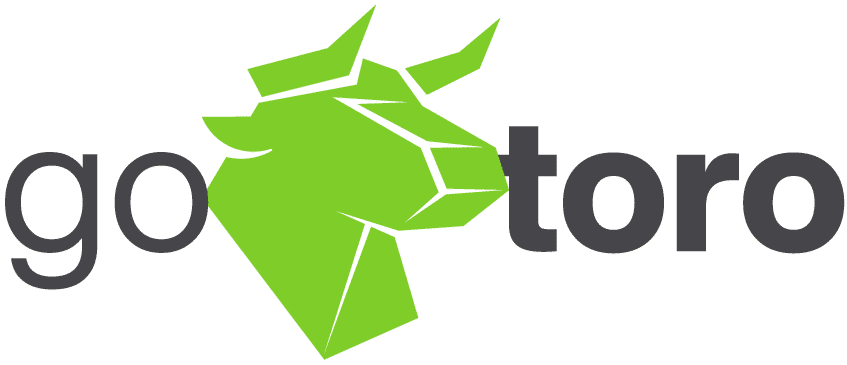Understanding the Challenges in Light Industrial Hiring

The current labor market for light industrial staffing faces a complex set of challenges. As demand for skilled workers continues to rise, many industries are struggling to fill critical positions. Labor shortages have become increasingly common, driven by factors such as a tight labor market, evolving job preferences, and changing workforce demographics. These shortages make it difficult for companies to maintain production levels and meet supply chain demands.
Among the biggest challenges in light industrial staffing is the high turnover rate. Light industrial roles, which often involve manual or repetitive tasks, tend to experience a high level of employee attrition. Workers frequently leave for better wages or more attractive positions in other industries, making retention a persistent issue.
Seasonal fluctuations also pose significant challenges. Many light industrial companies ramp up production during certain times of the year, such as holidays or harvest seasons, leading to spikes in labor demand. This cyclical nature of the industry adds further strain to the recruitment process, requiring companies to quickly find and onboard temporary or seasonal workers.
Additionally, competition for skilled talent is fierce, particularly in sectors like manufacturing, warehousing, and distribution. Companies are not only competing against one another but also against different industries that offer similar roles. This competition can make it harder for businesses to attract the right candidates, especially when other industries may offer higher wages or better benefits.
The Importance of Speed in Light Industrial Recruitment
In the light industrial staffing sector, time-to-hire is a critical factor for success. The ability to fill positions quickly can directly impact a company’s production efficiency and overall operational performance. Light industrial roles, often integral to maintaining steady production output, cannot remain vacant for long without causing disruptions to the entire workflow.
Demand in this sector can shift rapidly due to production cycles, changes in customer orders, or supply chain fluctuations. For example, a sudden spike in product demand may require a company to scale its workforce quickly to avoid delays. If a business is unable to hire fast enough, it risks bottlenecks in production, missed deadlines, and even lost revenue.
Prolonged vacancies in light industrial staffing also affect costs. When key roles go unfilled, companies may be forced to spend more on overtime or hire temporary workers at premium rates. Moreover, the pressure on existing employees can lead to burnout, lowered morale, and reduced productivity. This is why speed in recruitment is essential—not just for maintaining production, but also for preserving a healthy, motivated workforce.
A fast and efficient recruitment process ensures that light industrial businesses remain agile and responsive to fluctuating demands. By reducing the time-to-hire, companies can minimize the impact of vacancies, reduce overtime costs, and maintain a stable production flow.
Leveraging Digital Recruitment Tools for Faster Hiring
In today’s competitive landscape, digital tools are essential for accelerating light industrial staffing efforts. By utilizing online job boards, mobile-friendly applications, and social media, companies can reach potential candidates faster and more effectively.
Online job boards, such as Indeed, ZipRecruiter, and industry-specific platforms, are pivotal in casting a wide net. These platforms allow employers to post job openings that are accessible to a vast pool of job seekers actively looking for light industrial roles. A mobile-friendly application process is also crucial, as many candidates apply for jobs directly from their smartphones. Simplifying the application process with easy-to-fill forms and fewer required steps can significantly reduce drop-offs, ensuring that more candidates complete the application.
Social media platforms like LinkedIn, Facebook, and even Instagram offer additional avenues to attract skilled workers. By leveraging paid advertisements and targeting specific demographics, recruiters can ensure their job postings reach a highly relevant audience. Social media also enables companies to promote their employer brand, highlighting company culture, benefits, and the work environment, which can attract talent beyond the reach of traditional job boards.
In addition to online visibility, tools such as Applicant Tracking Systems (ATS) streamline the hiring process. ATS platforms automate tasks like screening resumes, sending interview requests, and tracking candidate progress, helping recruiters manage multiple job applications simultaneously. Automation tools within an ATS allow hiring managers to identify top candidates quickly, speeding up communication, and ultimately reducing the time-to-hire.
Creating Targeted Job Listings to Attract Qualified Candidates
To succeed in light industrial staffing, companies must craft job listings that attract skilled candidates. A well-written job description is clear, concise, and highlights the qualifications necessary for the role. Emphasizing the required skills, certifications, and job responsibilities upfront helps filter out unqualified applicants and narrows the candidate pool to those who meet the company’s exact needs.
When creating job listings, it’s important to use language that resonates with light industrial workers. Including industry-specific terms—such as “forklift certification” or “warehouse management experience”—ensures that your job posting speaks directly to candidates who possess the desired skills. Additionally, clearly defining job responsibilities and performance expectations allows candidates to understand the role better, reducing the likelihood of mismatches.
Another tip for crafting effective job descriptions is to highlight any benefits, pay ranges, and career development opportunities. Light industrial candidates often prioritize competitive wages, shift flexibility, and the potential for growth, so these should be emphasized in your job listing to stand out from competitors.
Speeding Up the Screening and Interview Process
In light industrial staffing, where the demand for workers can surge quickly, streamlining the screening and interview process is essential. One of the most efficient strategies is utilizing automated resume screening tools. These tools can quickly filter resumes based on key qualifications, such as required certifications, years of experience, or specific skill sets, significantly reducing the time spent manually reviewing applications.
Once potential candidates are identified, conducting virtual interviews or video assessments can expedite the interview process. These methods allow hiring managers to interview more candidates in less time and are particularly helpful when hiring across multiple locations or for remote roles. Group interviews or assessment centers can also be useful for evaluating multiple candidates at once, especially for entry-level light industrial positions that require similar skill sets.
Additionally, offering flexible interview times and keeping communication lines open with candidates can further streamline the process. Prompt feedback after interviews ensures that qualified candidates remain engaged, increasing the likelihood that they will accept job offers swiftly.
By combining automation, flexible scheduling, and efficient screening techniques, companies can reduce the time-to-hire, keeping up with the fast-paced demands of light industrial staffing.
Offering Competitive Wages and Benefits
In the light industrial staffing sector, offering competitive wages and attractive benefits packages is crucial for attracting skilled workers quickly. With a competitive labor market, candidates are more likely to gravitate toward companies that not only offer fair pay but also provide additional perks. Offering wages that meet or exceed industry standards can significantly reduce time-to-hire by making your positions more appealing than those offered by competitors.
However, pay is just one part of the equation. Benefits like health insurance, retirement plans, and paid time off are essential in making a job attractive to workers in light industrial roles. Including overtime opportunities, which are often highly sought after in this sector, can also be a strong incentive for workers looking for ways to boost their income.
Flexible shifts are another key benefit to highlight in job listings. Many light industrial workers value flexibility in their schedules, especially if they have other obligations, such as family or additional employment. Career development opportunities, such as training programs, certifications, and paths to promotion, can also be used to attract workers who are looking to grow within the company.
Promoting these benefits clearly in your job postings will set you apart from competitors and help you secure skilled candidates faster. By emphasizing not just competitive pay but also these comprehensive benefits, your light industrial staffing efforts will attract the right talent more effectively.
Creating a Positive Candidate Experience

A smooth, transparent, and efficient hiring process plays a significant role in light industrial staffing. Candidates today expect clear communication and quick feedback, and a positive experience during the hiring process can greatly influence their decision to accept a job offer. A well-organized hiring process reflects positively on your company and helps ensure candidates feel valued.
To improve the candidate experience, keep communication frequent and transparent. Let candidates know where they stand at every stage of the hiring process. Automated updates via applicant tracking systems (ATS) can keep candidates informed without creating extra work for your HR team. Additionally, offering quick feedback after interviews helps maintain engagement and prevents candidates from losing interest or accepting offers elsewhere.
Another way to enhance the candidate experience is by streamlining the interview and onboarding process. Virtual interviews, pre-screening assessments, and flexible interview times can accommodate the candidate’s needs and save time for both parties. A positive experience during the hiring process not only helps you attract top talent but also improves retention, as candidates who feel valued are more likely to accept offers and stay with the company longer.
Building a Talent Pipeline for Future Hiring Needs
Building a strong talent pipeline is essential for staying ahead in light industrial staffing. Rather than scrambling to fill roles when vacancies arise, companies can maintain a pool of pre-qualified candidates who are ready to step in when needed. This proactive approach reduces time-to-hire and helps avoid disruptions to production and operations.
One effective way to build a talent pipeline is by maintaining relationships with past applicants. Even if a candidate wasn’t selected for a previous role, they might be a great fit for future positions. Keeping their contact information and staying in touch through email newsletters or talent communities keeps them engaged and interested in your company.
Employee referrals are another valuable tool for building a talent pipeline. Current employees often know other skilled workers who would be a good fit for light industrial roles. Offering referral bonuses encourages employees to recommend qualified candidates, which can lead to faster hires from trusted sources.
Engaging passive candidates is another key strategy. These are individuals who aren’t actively seeking a new job but could be interested if the right opportunity comes along. Reaching out to passive candidates through networking events, job fairs, or social media can help you build relationships with skilled workers who may be interested in future opportunities.
Employer Branding and Reputation Management

In the highly competitive light industrial staffing market, a strong employer brand can be the key differentiator that sets a company apart from others vying for skilled talent. In an industry where competition for workers is fierce, building a positive reputation not only helps attract top candidates but also strengthens employee retention, which is critical for light industrial roles.
One way to enhance employer branding is by showcasing positive employee reviews. Testimonials from current or former employees can provide job seekers with valuable insights into your company culture, work environment, and management practices. Sharing these reviews on social media platforms or job boards can positively influence a candidate’s perception and increase their interest in applying.
A strong social media presence also plays a significant role in shaping your employer brand. Regularly sharing behind-the-scenes content, employee stories, and company milestones allows potential candidates to connect with your business on a more personal level. This is particularly important for light industrial staffing, where workers may be attracted to a company that appears approachable, supportive, and growth-oriented.
Furthermore, light industrial businesses can build a reputation as great places to work by offering development opportunities and clear paths for career progression. Providing training, certifications, and opportunities for promotions shows that your company invests in its employees. Recognizing and rewarding employee achievements through initiatives like Employee of the Month programs or company-wide shout-outs can also enhance your employer brand, attracting more candidates looking for growth and recognition in their roles.
Using Data Analytics to Improve Hiring Decisions
Data-driven hiring is becoming increasingly vital in light industrial staffing, where identifying the best sources for talent and optimizing the recruitment process are crucial for success. With the right data, companies can make informed decisions that streamline hiring and improve the quality of candidates.
One of the most important metrics to track is time-to-fill, which measures how quickly job vacancies are filled. By analyzing this data, companies can identify bottlenecks in the recruitment process and make adjustments to reduce delays. For instance, data may reveal that certain job boards or recruitment channels yield faster hires, allowing companies to allocate more resources toward those platforms.
Additionally, candidate quality metrics can be optimized using data analytics. Tools such as AI-driven recruitment platforms and predictive analytics help identify patterns that lead to successful hires. These tools can automate the screening process, ensuring that only candidates who meet the exact qualifications for light industrial roles are considered, thus speeding up the time-to-hire and improving the overall fit.
Another valuable insight from data analytics is the effectiveness of different recruiting channels. By understanding where the most qualified candidates are coming from—whether through job boards, referrals, or social media—companies can fine-tune their recruitment strategies and focus efforts on the best-performing sources. This not only helps in faster hiring but also ensures a higher retention rate, as candidates from the right channels tend to be better suited for the roles.
Conclusion
Speeding up the light industrial hiring process is essential for staying competitive in today’s fast-paced market. By leveraging targeted job listings, utilizing digital recruitment tools, and offering competitive wages and benefits, companies can attract skilled workers efficiently. Request a demo from GoToro today and see how you can attract and hire skilled workers faster, more efficiently, and with less hassle.


